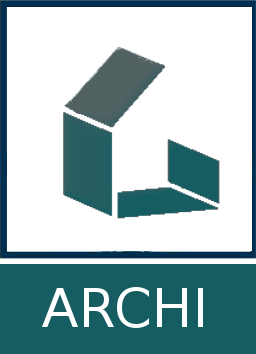Mémoire de fin d'études :"Le BIM en tant que support à la réalisation et la gestion d¿un inventaire réemploi."
Parée, Charles 
Promotor(s) :
de Boissieu, Aurélie  ;
Halbach, Amélie
;
Halbach, Amélie 
Date of defense : 29-Aug-2024/5-Sep-2024 • Permalink : http://hdl.handle.net/2268.2/21575
Details
| Title : | Mémoire de fin d'études :"Le BIM en tant que support à la réalisation et la gestion d¿un inventaire réemploi." |
| Translated title : | [fr] BIM as a support for the implementation and management of a reuse inventory. |
| Author : | Parée, Charles 
|
| Date of defense : | 29-Aug-2024/5-Sep-2024 |
| Advisor(s) : | de Boissieu, Aurélie 
Halbach, Amélie 
|
| Committee's member(s) : | Henz, Olivier 
De Feyter, Stéfan |
| Language : | French |
| Number of pages : | 116 |
| Keywords : | [fr] BIM [fr] Digital Deconstruction [fr] Urban Mining [fr] économie circulaire [fr] inventaire réemploi [fr] réemploi [en] BIM [en] Digital Deconstruction [en] Urban Mining [en] Circular economy [en] Reuse inventory [en] Reuse |
| Discipline(s) : | Engineering, computing & technology > Architecture |
| Target public : | Researchers Professionals of domain Student General public Other |
| Institution(s) : | Université de Liège, Liège, Belgique |
| Degree: | Master en architecture, à finalité spécialisée en art de bâtir et urbanisme |
| Faculty: | Master thesis of the Faculté d'Architecture |
Abstract
[fr] Dans le cadre de la transition du secteur de la construction vers une économie circulaire, ce mémoire a pour objectif d’étudier les enjeux du BIM pour réaliser et gérer d’un inventaire réemploi. En effet, la gestion et l’échange des informations sur les éléments de réemploi sont essentiels pour garantir leur récupération. Les logiciels BIM offrent alors un potentiel pour structurer, gérer et partager efficacement ces informations, ce qui fait actuellement défaut dans le secteur du réemploi. De plus, la manipulation des modèles BIM peut également faciliter l’évaluation du potentiel de réemploi des éléments de construction.
Cette recherche analyse la capacité d’un modèle BIM à fonctionner comme un inventaire réemploi. La méthodologie consiste à réaliser un inventaire réemploi BIM des éléments de construction présent dans une maison bruxelloise, suivi d’un démontage réel de ces éléments. Cette méthode expérimentale permet de comprendre comment le BIM peut structurer et stocker les informations nécessaires au réemploi. Nous examinerons également comment ce modèle BIM peut faciliter l’évaluation du potentiel de réemploi des éléments de construction. Les résultats obtenus lors de la modélisation BIM seront ensuite comparés avec ceux observés lors du démontage. Enfin, nous observerons la nécessité d’adapter les logiciels BIM pour répondre aux spécificités du réemploi.
[en] As part of the transition of the construction sector towards a circular economy, this thesis aims to explore the challenges of using BIM for the creation and management of a reuse inventory. Managing and exchanging information about reusable elements are essential to ensure their recovery. BIM software offers significant potential to structure, manage, and share this information effectively, which is currently lacking in the reuse sector. Additionally, manipulating BIM models can also facilitate the assessment of the reuse potential of construction elements.
This research examines the capability of a BIM model to function as a reuse inventory. The methodology involves creating a BIM reuse inventory of construction elements in a Brussels house, followed by the actual dismantling of these elements. This experimental approach allows us to understand to analyse how BIM can structure and store the information needed for reuse. We will also explore how the BIM model can facilitate the assessment of the reuse potential of construction elements. The results obtained from the BIM modeling will then be compared with those observed during the dismantling process. Finally, the research highlights the need to adapt BIM software to meet the specific requirements of reuse.
File(s)
Document(s)
Annexe(s)

 s194027Parée2024.rvt
s194027Parée2024.rvt
Description: Fichier Revit utilisé lors de la recherche
Size: 8 MB
Format: Unknown

 s194027Parée2024.dyn
s194027Parée2024.dyn
Description: Fichier Dynamo compatible avec le fichier Revit utilisé lors de la recherche
Size: 75.76 kB
Format: Unknown

 s194027Parée2024.xlsx
s194027Parée2024.xlsx
Description: Fichier Excel compatible avec le fichier Dynamo utilisé lors de la recherche
Size: 10.99 kB
Format: Microsoft Excel XML
Cite this master thesis
The University of Liège does not guarantee the scientific quality of these students' works or the accuracy of all the information they contain.


 Master Thesis Online
Master Thesis Online



 s194027Parée2024.pdf
s194027Parée2024.pdf
